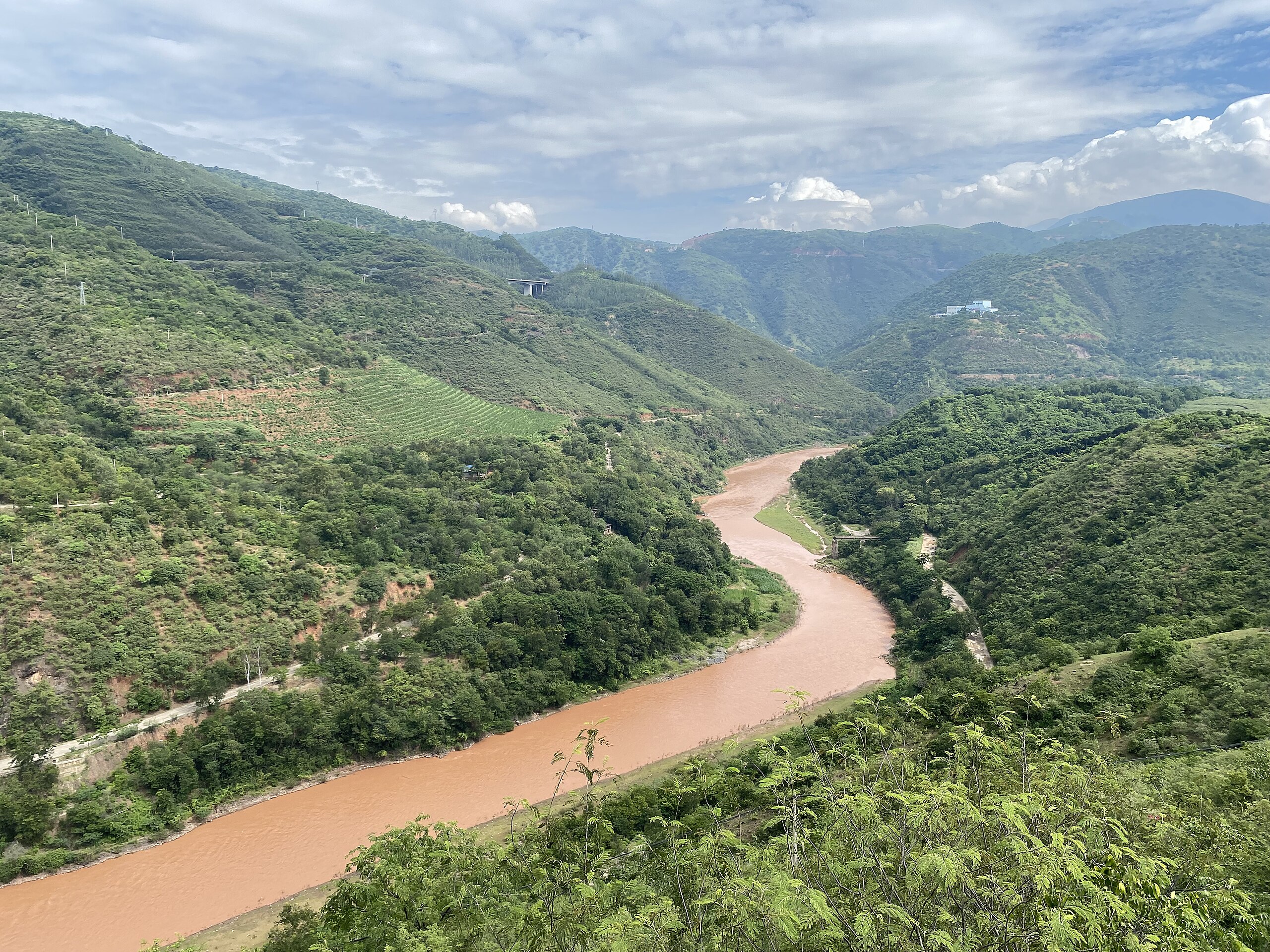
The Red River flows through Yunnan on its way to the South China Sea. Red sediments give the river its distinctive color. In the past 1,500 years, humans have increased erosion in the river basin as well as the capacity of the landscape to absorb carbon dioxide through silicate weathering. Credit: 瑞丽江的河水/ Wikimedia CC BY-SA 4.0
AGU News
AGU25 annual meeting scientific program online
The online scientific program and schedule is now available for the December 2025 meeting in New Orleans, Louisiana. [schedule] [press registration]
Featured Research
Hundreds of HIV care centers are at risk of disruption of services from climate change
Extreme weather events like floods and droughts present unique challenges to HIV care clinics and for those living with HIV in those regions. Clinics face the risk of losing access to needed medication, electricity, and regular day-to-day activities when faced with these weather events. Those living with HIV are at an increased risk of exposure to additional illnesses that can accompany floods or droughts and the potential loss of income, housing and security. The new study found almost 690 clinics face a moderate to high risk of both floods and droughts. Mozambique and South Africa had the most clinic at high risk for these multi-hazard events, with Southern Africa also housing the highest number of measured clinics. [GeoHealth study]
1,500 years of farming, deforestation boosted soil carbon capture capacity in Southeast Asia
When carbon dioxide in the atmosphere falls to earth via rainwater, it reacts with silica in rocks to form compounds that eventually flow to the sea, locking the carbon away. Human activities like farming and mining can augment this process — known as silicate weathering — by exposing more rock surface area and increasing soil erosion, boosting the amount of carbon dioxide absorbed from the atmosphere. Using sediments in the South China Sea, researchers pieced together a 3,800-year history of weathering in the Red River Basin. They found that human activities have upped the region’s ability to sequester carbon through silicate weathering by 150% over the past 1,500 years. But erosive actions like agriculture and deforestation have driven up greenhouse gas emissions as well. [Journal of Geophysical Research: Earth Surface study]
As CO2 concentrations rise, radio and navigation systems may falter
Layers of metallic ions — what scientists call “sporadic-E layers”— regularly form high in Earth’s atmosphere, where they sometimes disrupt high-frequency radio, navigation, and positioning systems. Researchers in Japan used an atmospheric model to simulate how increasing carbon dioxide concentrations might affect this phenomenon. Doubling atmospheric carbon dioxide from present levels, they found, changed atmospheric wind and chemistry in ways that promoted sporadic-E layers, making them stronger, longer-lasting, and lower-altitude. Changes like this could make radio and navigation systems less reliable in the future [Geophysical Research Letters study]
Beavers are not concerned about groundwater
But, scientists are! A new study illuminates the complex interactions of beaver dam induced ponding and floodplain inundation with shallow groundwater storage and flow patterns. [Eos editors’ highlights][Water Resources Research study]
Webb Telescope spies Io’s volcanic activity and sulfurous atmosphere
New James Webb Space Telescope images reveal cooling lava, volcanic sulfur monoxide gas, and sulfur gas emissions created by interactions between plasma and the moon’s atmosphere. [Eos research spotlight][JGR Planets study]
Voicing farmers’ concerns on the future of agriculture
A new study explores the deep, multi-faceted concerns of small- and mid-scale farmers about the direction of farming and food systems in the United States. [Eos editors’ highlights][Community Science study]
Serendipity in space: NASA’s eye in the sky
The Orbiting Carbon Observatory-2 (OCO-2) mission, proposed for early termination, has turned out to be a boon to forest and agricultural management. [Eos editors’ highlights][AGU Advances commentary]